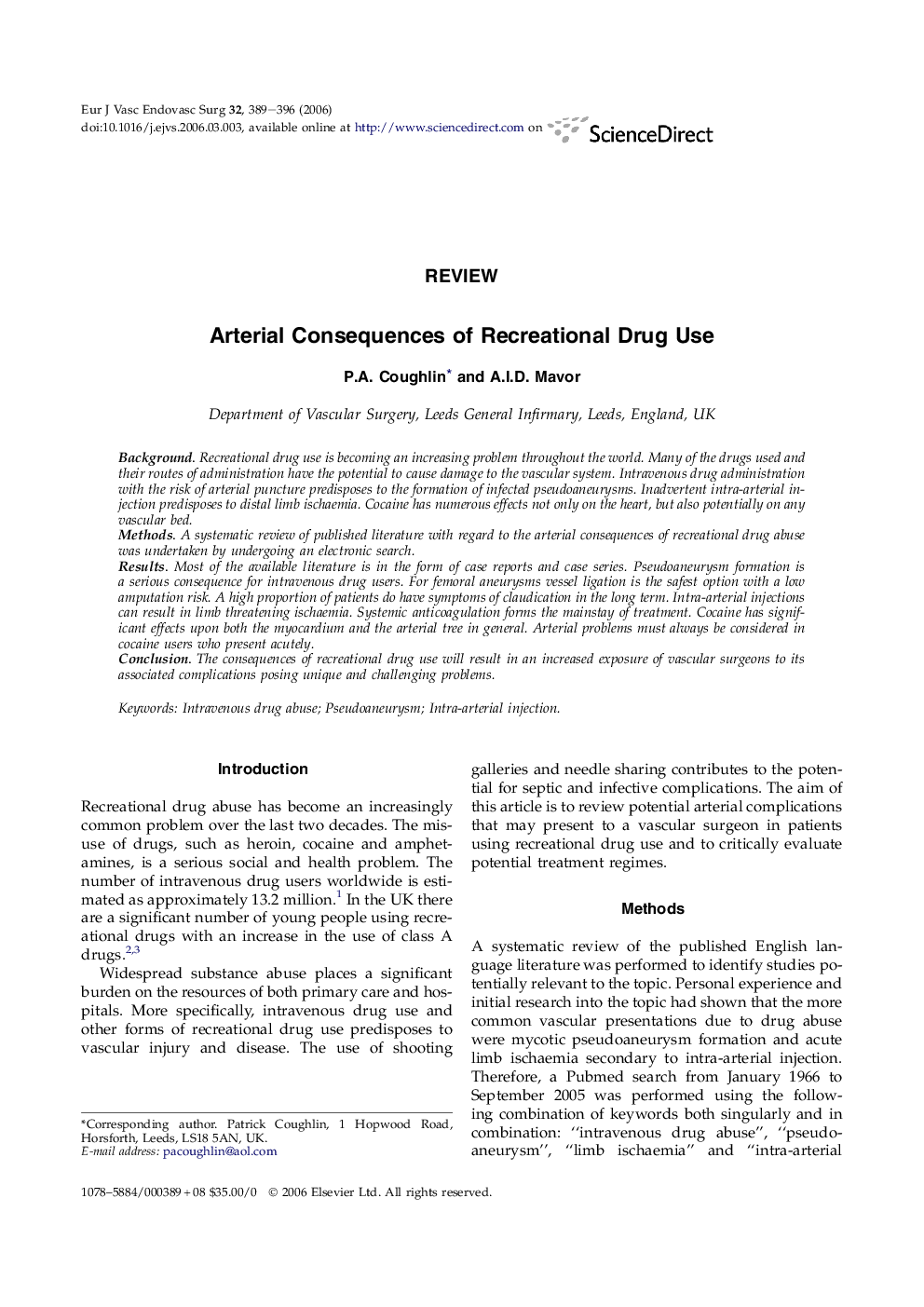| Article ID | Journal | Published Year | Pages | File Type |
|---|---|---|---|---|
| 2914907 | European Journal of Vascular and Endovascular Surgery | 2006 | 8 Pages |
BackgroundRecreational drug use is becoming an increasing problem throughout the world. Many of the drugs used and their routes of administration have the potential to cause damage to the vascular system. Intravenous drug administration with the risk of arterial puncture predisposes to the formation of infected pseudoaneurysms. Inadvertent intra-arterial injection predisposes to distal limb ischaemia. Cocaine has numerous effects not only on the heart, but also potentially on any vascular bed.MethodsA systematic review of published literature with regard to the arterial consequences of recreational drug abuse was undertaken by undergoing an electronic search.ResultsMost of the available literature is in the form of case reports and case series. Pseudoaneurysm formation is a serious consequence for intravenous drug users. For femoral aneurysms vessel ligation is the safest option with a low amputation risk. A high proportion of patients do have symptoms of claudication in the long term. Intra-arterial injections can result in limb threatening ischaemia. Systemic anticoagulation forms the mainstay of treatment. Cocaine has significant effects upon both the myocardium and the arterial tree in general. Arterial problems must always be considered in cocaine users who present acutely.ConclusionThe consequences of recreational drug use will result in an increased exposure of vascular surgeons to its associated complications posing unique and challenging problems.
